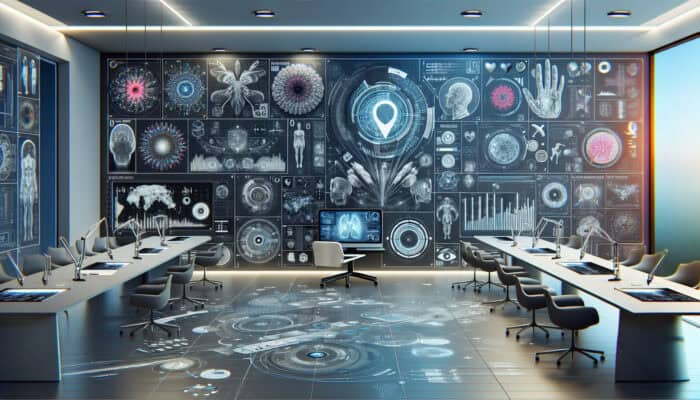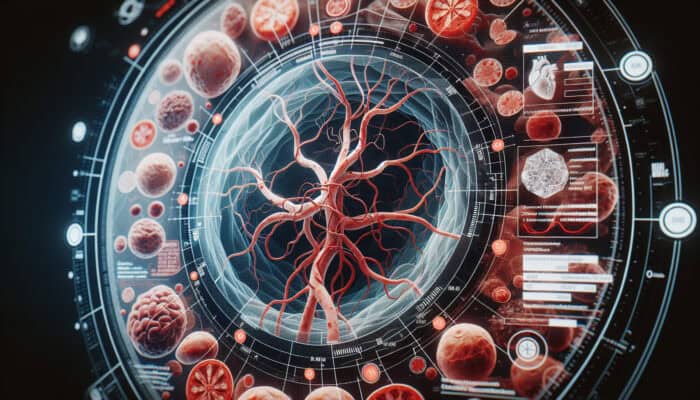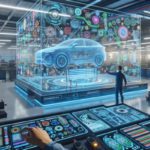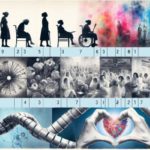Enhance Your Skills in Visual Clarity Techniques
Recognising the Significance of Clarity Enhancement Techniques

Clarity enhancement techniques encompass a broad spectrum of advanced methods specifically designed to significantly improve visual clarity of human vas. These essential techniques are crucial for enhancing perception and facilitating effective interaction with complex structures, making them indispensable in various settings, including educational institutions and clinical environments. By employing clarity enhancement strategies, professionals can foster deeper understanding and achieve more favourable outcomes. The primary advantages of integrating clarity enhancement techniques include:
- Greater visual perception of intricate structures.
- Enhanced learning experiences for both students and professionals.
- Increased accuracy in clinical diagnoses and medical interventions.
- Improved communication among experts across diverse disciplines.
- Elevated user confidence and engagement in interactive environments.
By utilising these techniques, practitioners can cultivate environments where clarity is of utmost importance, thereby boosting overall effectiveness and results in their respective fields.
Fundamental Principles Guiding Clarity Enhancement Techniques
The success of clarity enhancement techniques is grounded in several key principles that shape their development and application. Grasping these foundational aspects is vital for maximising the benefits these techniques offer. Core principles include:
- Perceptual clarity: Enhancing the visual representation of information.
- Contextual relevance: Adapting techniques to specific environments and target audiences.
- Usability: Ensuring that techniques are accessible and user-friendly.
- Technological integration: Harnessing modern technology to amplify clarity functions.
- Continuous feedback: Modifying techniques based on user experiences and results.
These principles collectively ensure that clarity enhancement techniques remain not only effective but also adaptable to meet the evolving needs and contexts of various applications, making them invaluable across numerous fields.
Exploring the Historical Evolution of Clarity Enhancement Techniques
Delving into the historical development of clarity enhancement techniques unveils a fascinating narrative that informs current practices. Over the years, these techniques have evolved to meet the growing demands across multiple sectors. Significant milestones in their progression include:
- Initial visualisation methods first implemented in educational and healthcare settings.
- The advent of digital tools that transformed visual clarity.
- Progress in cognitive psychology aimed at enhancing understanding and interaction.
- The integration of augmented reality and virtual reality technologies into clarity enhancement.
- A rising emphasis on user-centered design in the creation of clarity tools.
Understanding this historical context sheds light on contemporary applications and uncovers opportunities for future innovations that could further elevate clarity techniques.
Examining Current Applications of Clarity Enhancement Techniques Across Various Fields

Clarity enhancement techniques find application across a diverse range of fields, resulting in substantial advancements in visual clarity and engagement with human vas. These applications highlight the versatility and profound impact of these techniques in numerous domains. Key areas of implementation include:
- Medical imaging technologies that enhance diagnostic clarity.
- Educational tools specifically designed to assist in grasping complex concepts.
- Data visualisation methods that improve analytical clarity.
- Interactive software aimed at bolstering user engagement.
- Art and design applications where clarity is essential for aesthetic appeal.
The extensive application of these techniques underscores their critical role in not only enhancing visual clarity but also improving overall communication and interaction across a multitude of fields.
Anticipating Innovations and Future Trends in Clarity Enhancement Techniques
The domain of clarity enhancement techniques is set for substantial evolution, driven by technological advancements and a deeper understanding of user requirements. Expected trends include:
- A growing reliance on artificial intelligence to customise clarity solutions.
- Further enhancements in virtual and augmented reality applications.
- Incorporation of neurocognitive research to improve clarity effectiveness.
- The development of more inclusive tools that cater to diverse user groups.
- A heightened focus on sustainability and eco-friendly practices in the creation of clarity tools.
These anticipated trends indicate a future where clarity enhancement techniques become increasingly integral to various fields, continually transforming how we interact with complex information.
Gain Expert Insights on Clarity Enhancement Techniques for Human Vas
Real-World Examples Demonstrating Successful Clarity Enhancement Applications

Experts frequently highlight successful cases where clarity enhancement techniques have significantly improved clarity in human vas. In medical environments, for example, advanced imaging techniques have revolutionised how practitioners observe and diagnose vascular conditions, leading to markedly improved patient outcomes. These instances underscore the transformative potential of clarity enhancement in practical applications.
Steps for Successfully Implementing Clarity Enhancement Techniques
Industry experts outline actionable steps that guide users in effectively applying clarity enhancement techniques. Commence by thoroughly assessing the specific needs of the environment, followed by selecting the appropriate tools and methods tailored to those requirements. This thoughtful approach ensures optimal implementation and maximises the results achieved.
Expert Opinions on Anticipated Future Trends in Clarity Enhancement
Expert analyses indicate that future trends in clarity enhancement will likely focus on leveraging technology for personalised solutions. Anticipated breakthroughs in artificial intelligence and machine learning will facilitate bespoke clarity techniques that adapt to individual user preferences and requirements, thus enhancing overall effectiveness.
How Do Clarity Enhancement Techniques Operate Effectively?
Comprehending the Mechanisms Behind Clarity Enhancement Techniques
Understanding the mechanisms by which clarity enhancement techniques function is crucial for their effective application. Generally, these techniques operate by minimising cognitive load through clearer visual presentations, enabling users to focus on pertinent information without unnecessary distractions. This approach fosters more streamlined interactions with complex content.
What Factors Influence the Effectiveness of Clarity Enhancement Techniques?
The effectiveness of clarity enhancement techniques is determined by several key factors, including the quality of visuals employed, the context in which these techniques are implemented, and the specific methods selected. Additionally, variations in user engagement and familiarity with the content significantly influence overall effectiveness.
Technological Innovations Shaping Clarity Enhancement Techniques
Technological advancements are significantly influencing the development of new clarity enhancement techniques tailored for human vas. Innovations such as high-definition imaging, real-time data visualisation, and interactive platforms empower users to engage with and comprehend visual content more effectively, thereby enhancing overall clarity and understanding.
Noteworthy Benefits of Clarity Enhancement Techniques
Enhancing Visual Perception for Improved Interaction
Clarity enhancement techniques play a vital role in significantly boosting the visual perception of human vas, promoting better interaction and comprehension. When clarity is elevated, users can engage more thoroughly with the information presented, leading to superior outcomes across various applications and fields.
What Are the Long-Term Benefits of Clarity Enhancement Techniques?
Exploring the long-term advantages of clarity enhancement techniques reveals their enduring impact on both individual and organisational levels. Enhanced clarity results in improved information retention, better decision-making capabilities, and overall higher satisfaction among users, representing a considerable advantage in any environment where these techniques are employed.
How Do Clarity Enhancement Techniques Enrich Daily Life?
Clarity enhancement techniques can greatly improve everyday life by enhancing the clarity of human vas, making daily tasks more efficient and manageable. From clearer navigation tools to user-friendly educational resources, the benefits are diverse and far-reaching, influencing multiple aspects of daily living and learning.
Research-Backed Benefits of Clarity Enhancement Techniques for Human Vas
Scientific Evidence Supporting the Effectiveness of Clarity Enhancement
Numerous academic studies have substantiated the benefits of clarity enhancement techniques in improving the clarity of human vas. These studies demonstrate that such methods can lead to significant improvements in user comprehension and interaction, highlighting their essential role across various fields and applications.
What Expert Insights Are Offered Regarding Research Findings?
Experts frequently discuss the implications of research findings related to clarity enhancement techniques, providing valuable insights into their effectiveness. These discussions emphasise the importance of ongoing research in refining methodologies and improving outcomes, ensuring that clarity enhancement techniques continue to evolve.
How Can Research Influence the Development of Future Techniques?
Research plays a pivotal role in guiding the advancement of future clarity enhancement techniques for human vas. By identifying effective strategies and gaining insights into user needs, research empowers innovators to create tools that are both effective and user-centric, ensuring that clarity enhancement remains responsive to the demands of changing contexts.
Practical Uses of Clarity Enhancement Techniques in Everyday Life
Common Uses of Clarity Enhancement Techniques in Daily Scenarios
Clarity enhancement techniques are widely utilised in daily life to improve the clarity of human vas, thereby enhancing various activities such as learning, navigation, and data analysis. This prevalent application underscores their vital role in contemporary society, illustrating their significance across diverse settings and functions.
What Are Recommended Practices for Applying Clarity Enhancement Techniques?
Best practices for implementing clarity enhancement techniques ensure optimal results in enhancing human vas clarity. These practices involve selecting the most suitable tools, tailoring approaches to specific contexts, and providing adequate training for users to maximise their understanding and engagement with the techniques employed.
How Can Clarity Enhancement Techniques Be Personalised for Varied Needs?
Clarity enhancement techniques can be customised to address a broad spectrum of user needs, guaranteeing their effectiveness across different demographics and contexts. The inherent flexibility of these approaches allows practitioners to meet specific requirements, optimising the efficacy of clarity enhancement in numerous environments.
Case Studies Showcasing Successful Implementation of Clarity Enhancement Techniques
Numerous case studies illustrate the successful application of clarity enhancement techniques, highlighting their impact on improving human vas clarity in real-world scenarios. These examples provide invaluable insights into effective strategies and outcomes, demonstrating the transformative potential of clarity enhancement in practice.
Available Tools and Resources for Enhancing Clarity
A variety of tools and resources are accessible to support the application of clarity enhancement techniques, facilitating improved human vas clarity. These resources range from software applications to educational materials, ensuring that users can readily access the tools they need to enhance clarity both effectively and efficiently.
What Challenges Are Associated with Implementing Clarity Enhancement Techniques?
Identifying Technical Challenges in Implementation
Technical challenges encountered during the implementation of clarity enhancement techniques can significantly affect their overall effectiveness. These challenges may encompass limitations in available technology, compatibility issues with existing systems, and the necessity for specialised training or skills to utilise the techniques effectively.
What Common Hurdles Impede the Adoption of Clarity Enhancement Techniques?
Several common hurdles obstruct the adoption of clarity enhancement techniques, including financial constraints, accessibility issues, and resistance from users who may lack familiarity with new technologies. Addressing these barriers is crucial for ensuring widespread implementation and maximising the benefits that clarity enhancement can offer.
How Can Challenges in Implementation Be Overcome?
Successfully overcoming challenges related to the implementation of clarity enhancement techniques requires innovative solutions and ongoing efforts. Effective strategies may involve providing comprehensive training resources, advocating for necessary funding, and demonstrating the tangible benefits of these techniques to potential users, thereby encouraging greater acceptance.
Proven Strategies for Implementing Clarity Enhancement Techniques in Human Vas
Established Methods for Enhancing Clarity
Established strategies for enhancing the clarity of human vas have emerged from extensive research and practical applications. These strategies focus on fostering user engagement, adapting techniques to specific contexts, and integrating technology to maximise clarity and effectiveness in presentations.
What Are the Most Effective Techniques for Enhancing Clarity?
Identifying the most effective clarity enhancement techniques can significantly assist users in achieving optimal results in enhancing human vas clarity. Techniques that prioritise visualisation, interactivity, and user feedback consistently exhibit superior outcomes, making them excellent choices for practitioners aiming to enhance clarity.
How Can Users Ensure the Reliability of Clarity Enhancement Techniques?
Ensuring the reliability of clarity enhancement techniques is critical for their successful implementation. Users can achieve this by selecting methods supported by thorough research, continuously assessing their efficacy, and remaining open to adjustments based on user feedback, thereby fostering a cycle of improvement.
How to Evaluate the Success of Clarity Enhancement Techniques?
Assessing the effectiveness of clarity enhancement techniques is essential for ongoing improvement and optimisation of human vas clarity. Success metrics might include user satisfaction surveys, performance evaluations, and comparative studies analysing clarity both before and after implementing specific techniques.
Future Prospects for Clarity Enhancement Techniques
Emerging Trends in Clarity Enhancement Techniques
Emerging trends in clarity enhancement techniques present exciting opportunities for further improving human vas clarity. Trends such as gamification, personalised learning experiences, and advanced data analytics are poised to enhance engagement and understanding, marking a significant shift in how clarity can be achieved.
What Innovations Are Anticipated in Clarity Enhancement Techniques?
Expected innovations in clarity enhancement techniques promise to revolutionise the manner in which we enhance human vas clarity. Anticipated advancements include enhancements in machine learning algorithms and augmented reality tools, which will facilitate unprecedented levels of engagement and comprehension, transforming how information is presented and interpreted.
How Will Clarity Enhancement Techniques Continue to Evolve Over Time?
The evolution of clarity enhancement techniques will persistently be driven by ongoing technological advancements and the changing needs of users. As new challenges arise, the capability to adapt and innovate will be essential in maintaining the effectiveness of clarity enhancement methods and ensuring they remain relevant and impactful.
Answering Frequently Asked Questions About Clarity Enhancement Techniques
What are clarity enhancement techniques?
Clarity enhancement techniques encompass a range of methods designed to significantly enhance the visual clarity of human vas, facilitating improved perception and interaction across numerous fields and applications.
How do clarity enhancement techniques operate?
These techniques function by enhancing visual presentations, minimising cognitive load, and enabling users to concentrate on relevant information without distractions, resulting in more effective engagement with complex content.
What are the key benefits of clarity enhancement techniques?
Key benefits include improved visual perception, enhanced learning experiences, increased diagnostic accuracy, and improved communication among users and professionals across various fields.
What factors affect the effectiveness of clarity enhancement techniques?
The effectiveness of these techniques can be influenced by several critical factors, including the quality of visuals, the context in which they are applied, the specific methods employed, and the levels of user engagement and familiarity with the content.
Can clarity enhancement techniques be customised for different users?
Absolutely, these techniques can be personalised and tailored to meet the diverse needs of various user groups, significantly enhancing their overall effectiveness and impact.
What are common applications of clarity enhancement techniques?
Common applications include medical imaging, educational tools, data visualisation methods, and interactive software designed to enhance user engagement and understanding.
What barriers exist to the adoption of clarity enhancement techniques?
Barriers to the adoption of these techniques often include financial constraints, accessibility issues, and resistance from users who may be unfamiliar with new technologies.
How can users ensure the reliability of clarity enhancement techniques?
Users can ensure the reliability of these techniques by selecting methods backed by research, continually assessing their efficacy, and adapting approaches based on user feedback to optimise outcomes.
What future trends are expected in clarity enhancement techniques?
Emerging trends include increased utilisation of artificial intelligence, advancements in augmented reality and virtual reality, as well as a focus on personalised user experiences that cater to specific needs.
How can the success of clarity enhancement techniques be measured?
Success can be measured through user satisfaction surveys, performance assessments, and comparative analyses of clarity both before and after implementing specific techniques, ensuring ongoing improvement and optimisation.
Discover more content on our YouTube channel!
The Article Clarity Enhancement Techniques for Human Vas: Universal Strategies First Published On: https://vagods.co.uk
The Article Clarity Enhancement Techniques for Human Visuals: Universal Tips Was Found On https://limitsofstrategy.com

